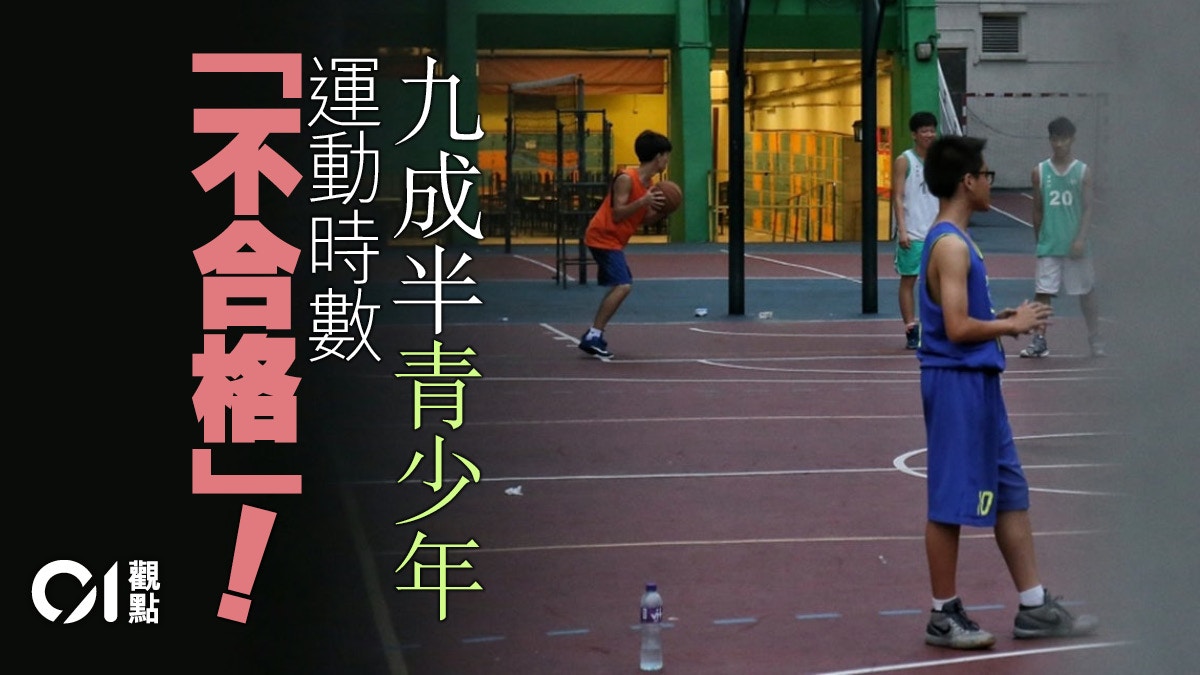01 view
Written by: Commentary Editing Room
2020-10-23 18:00
Last update date: 2020-10-23 18:00
School children in Hong Kong have busy lives and lack of exercise. This is even more obvious under the epidemic.
The Hong Kong Sports Fund announced on Thursday (October 22) the results of a pilot study of the "SportsHour Study on the Hours of Participation in Sports for Primary and Secondary School Students". It found that 95% of the youth sports hours in Hong Kong could not meet the World Health Organization's recommendations.
Even if teenagers have more time for physical activity on weekends, their overall compliance rate is still only two and a half.
School children’s physical activity in their adolescence is already insufficient, and their health after growing up is naturally more worrying.
Even if teenagers have more time for physical activity on weekends, their overall compliance rate is still only 25%.
(Profile picture)
The situation of teenage girls is more serious
The World Health Organization recommends that adolescents between the ages of 5 and 17 should perform a total of at least 60 minutes of moderate to high-intensity physical activity a day, such as hiking, football, and badminton. In addition, the WHO also recommends that young people should perform at least three high-intensity activities a week. Physical activity, including activities to strengthen muscles and bones.
However, these goals are still far away for Hong Kong youth today.
From September last year to January this year, the Hong Kong Sports Fund has distributed activity recorders to more than 700 primary and middle school students to measure their exercise hours and intensity data in a week.
In addition to finding that 90% of students do not exercise enough, the survey also found that the average number of hours of exercise for girls on school days is three times lower than that for boys (girls: 2.7%, boys: 8.5%), and the overall age of school children is also proportional to the number of hours they participate in sports. The inverse trend is that the number of sports participation hours began to decline from the age of 15.
The above study was completed before the outbreak of the epidemic, and it still did not take into account the impact of students' long-term home fight against the epidemic and restrictions on going out this year. Therefore, the result that more than 95% of students are under-exercise may already be a relatively optimistic projection.
Students have been suspended for many months, and the venues under the Leisure and Cultural Services Department have been closed due to the epidemic, so that they not only lose school sports classroom exercise time, but also greatly reduce the opportunity to go out for sports.
The Education Bureau and schools should encourage students to continue to exercise during their stay at home to maintain a healthy body, and consider mobilizing classroom arrangements in conjunction with the epidemic to ensure that students' physical education courses are not too affected.
Modern society attaches more importance to youth academics than physical fitness, and it also makes teenagers do homework more than physical exercises.
(Data Picture/Photo by Zhang Qianyi)
The cause of "structural laziness" is worth pondering
Inadequate exercise for young people in Hong Kong is partly due to the lack of attention in physical education classes.
According to the "Sports Key Learning Area Curriculum Guidelines", physical education class hours of primary and secondary school students in Hong Kong only account for 5% to 8% of the total class hours, and only about 80 to 120 minutes per week.
According to a UNESCO report, Hong Kong’s primary and secondary school physical education hours do lag behind other developed countries, which are lower than the average of 148 minutes per week in the United States, 135 minutes per week in Germany, and 130 minutes per week in Japan.
Although Hong Kong’s class hours are urgent, judging from the backwardness of physical education classes, there is still a need to increase physical education classes in Hong Kong’s primary and secondary schools.
However, Hong Kong culture has always advocated reading, and schools often require students to obtain better results in grammar exams. Therefore, changing the entire social culture is the key to promoting the Hong Kong movement.
Even within the school, physical education classes have to make concessions to other subjects from time to time, and the system of determining the life and death of the diploma exam makes the school, family, and students pay more attention to reading than sports in the long run.
Even if the school is willing to increase physical education hours, it is conceivable that the resistance of other subjects will be given up without increasing the total class hours.
Therefore, the crux of the lack of student exercise actually depends on whether the government can provide students with a social atmosphere suitable for spending time on exercise, and fundamentally solve the problem of a single way out for students, so that academic performance is no longer the only criterion for student success.
01 view
Sports 01 view

